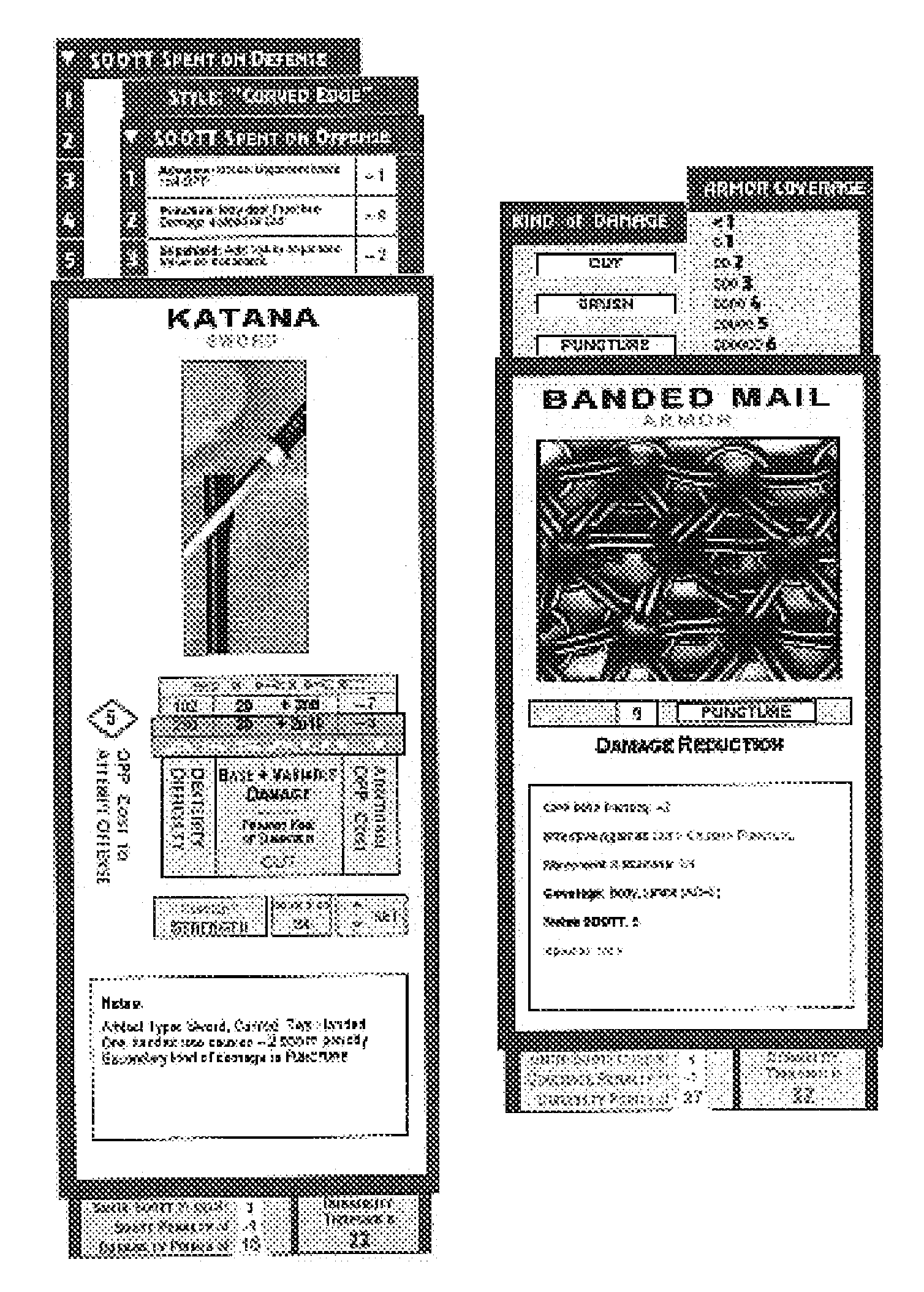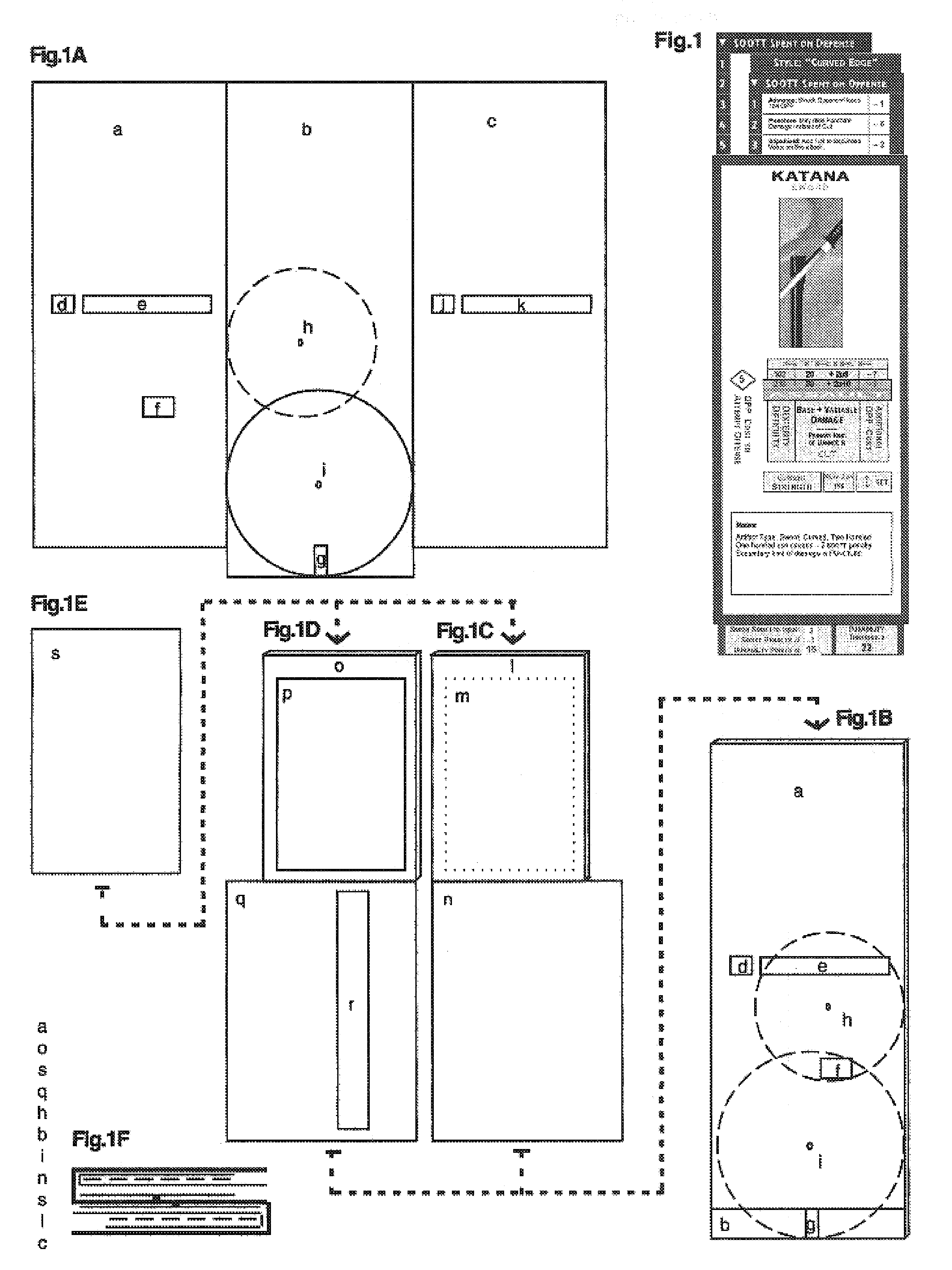Role-playing game with interactive cards and game devices, namely in the form of linear and rotary slide rules, novel use of dice, tactical combat, word-based magic, and dynamic attrition
a game device and interactive technology, applied in the field of role playing games, can solve the problems of unfavorable many potential players' enjoyment of rpgs, and inherently limited to card-play mechanics, and achieve the effect of increasing the playability of otherwise complex game piece interaction and increasing prowess or ability
- Summary
- Abstract
- Description
- Claims
- Application Information
AI Technical Summary
Benefits of technology
Problems solved by technology
Method used
Image
Examples
Embodiment Construction
[0069]The Present invention, which may hereafter be referred to as StoryForge (SF), is a system of role-playing, enabling participants to enact the part of an imaginary being in a fantasy world. SF is modular and modifiable, allowing gamers to incorporate or adapt only the desired components. Gamers take one of two main roles: the Players or the Fates. Most gamers will be a Player, running one or more Player Characters (PCs) in a storyline guided by the Fates. Typically one gamer plays the Fates, and would be considered the Referee. The Fates administer the Non-Player Characters (NPCs)—all those imaginary beings not run by Players. SF is a support tool to allow a creative, colorful, and interactive narrative to be woven by several gainers. The primary objective is for gamers to take part in an adventure, and create a wonderful tale in the process. However, the objective of the game may be changed to something more closely approximating zero-sum games, where gamers simply have a duel...
PUM
 Login to View More
Login to View More Abstract
Description
Claims
Application Information
 Login to View More
Login to View More - R&D
- Intellectual Property
- Life Sciences
- Materials
- Tech Scout
- Unparalleled Data Quality
- Higher Quality Content
- 60% Fewer Hallucinations
Browse by: Latest US Patents, China's latest patents, Technical Efficacy Thesaurus, Application Domain, Technology Topic, Popular Technical Reports.
© 2025 PatSnap. All rights reserved.Legal|Privacy policy|Modern Slavery Act Transparency Statement|Sitemap|About US| Contact US: help@patsnap.com



